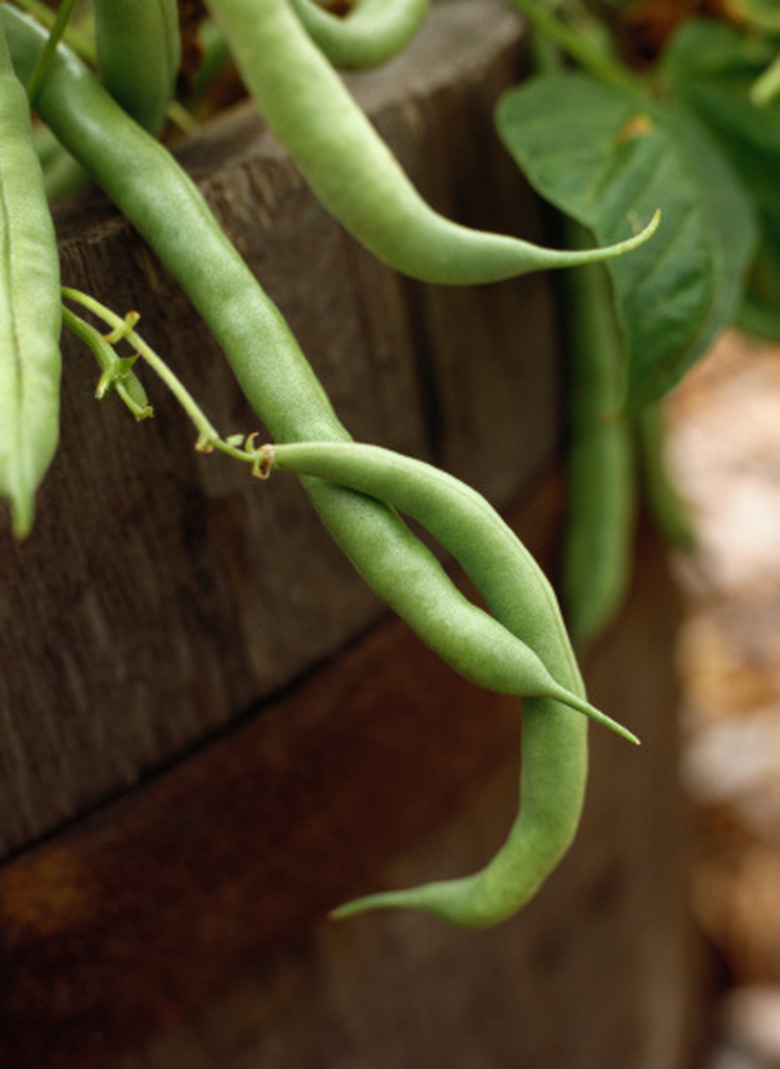How Tall Does A Bean Plant Grow?
Beans are one of the most commonly grown vegetables in home gardens. They are a nutritious, low-calorie food, and they are easy to prepare. Whether eaten fresh or frozen or canned for future use, beans retain their rich flavor and texture well. Best of all, beans are a simple crop to grow, making them an ideal choice for novice gardeners.
Types
There are two categories of bean plants: bush beans and pole beans. Bush beans grow to be about 1 to 2 feet tall and do not require staking for support. Common bush bean types include Condender, Blue Lake and Greencrop. Pole beans are climbers that grow up poles, fences or string. They are much larger than bush beans, often reaching 7 to 8 feet tall. Pole bean varieties include Kentucky Wonder, Romano and Kentucky Blue.
- Beans are one of the most commonly grown vegetables in home gardens.
- Bush beans grow to be about 1 to 2 feet tall and do not require staking for support.
Planting and Care
A well-prepared bed is important to cultivate a healthy bean crop. Select a location that receives full sun (six or more hours of bright sunlight each day). Green beans need soil temperatures above 65 degrees Fahrenheit to germinate, so plant seeds about a week after the first frost-free date in your area. Set the seeds in a shallow trench about 1 inch deep, 2 to 4 inches apart, with 18 inches between rows, and keep the soil moist to encourage germination. Since pole beans require plant support, a trellis is necessary for optimal growth. It should be 6 to 8 feet tall and durable enough to remain steady during inclement weather.
Considerations
Bean plants require little attention once seedlings emerge, but the seeds should be kept moist until they germinate. After the seeds sprout, watering is only really necessary during extremely dry conditions. Problems commonly plaguing bean plants are blossom drop, which occurs in hot weather, and root rot and rust, which are fungal infections that set in during cool, wet weather. Problem insects include aphids, thrips and Mexican beetles.
- A well-prepared bed is important to cultivate a healthy bean crop.
- Problems commonly plaguing bean plants are blossom drop, which occurs in hot weather, and root rot and rust, which are fungal infections that set in during cool, wet weather.
Harvesting and Preparation
Most bean plants mature within 40 to 50 days, so multiple crops can be planted during the growing season. Once beans are harvested, they can be eaten fresh or frozen to enjoy later. Steaming beans for five minutes before serving is the best way to retain the most nutrients. To prepare beans for freezing, boil them in water for approximately two minutes, then plunge them in cold water for a minute or two. Pat the beans dry with a towel and place them in freezer bags. Frozen beans can be prepared using the same method as fresh ones.
